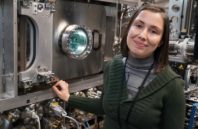Scientists at the US Department of Energy’s (DOE) Brookhaven National Laboratory have developed a new approach of 3D x-ray imaging for observing bulky materials in great detail, which could help scientists analyse the structural information of countless materials, from batteries to biological systems.
The scientists developed their approach at Brookhaven’s National Synchrotron Light Source II (NSLS-II) – a DOE Office of Science User Facility where scientists use ultra-bright x-rays to reveal details at the nanoscale.
NSLS-II’s hard x-ray nanoprobe (HXN) beamline is experimental station that uses advanced lenses to offer world-leading resolution down to 10 nanometres. However, scientists who use x-ray microscopes have been restricted by the size and thickness of the materials they can study.
‘The x-ray imaging community is still facing major challenges in fully exploiting the potential of beamlines like HXN, especially for obtaining high-resolution details from thick samples,’ said Yong Chu, lead beamline scientist at HXN. ‘Obtaining quality, high-resolution images can become challenging when a material is thick—that is, thicker than the x-ray optics’ depth of focus.’

 (585) 768-2513
(585) 768-2513

